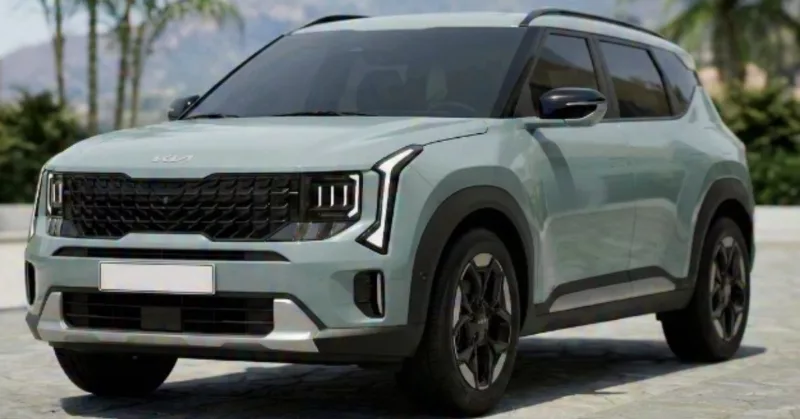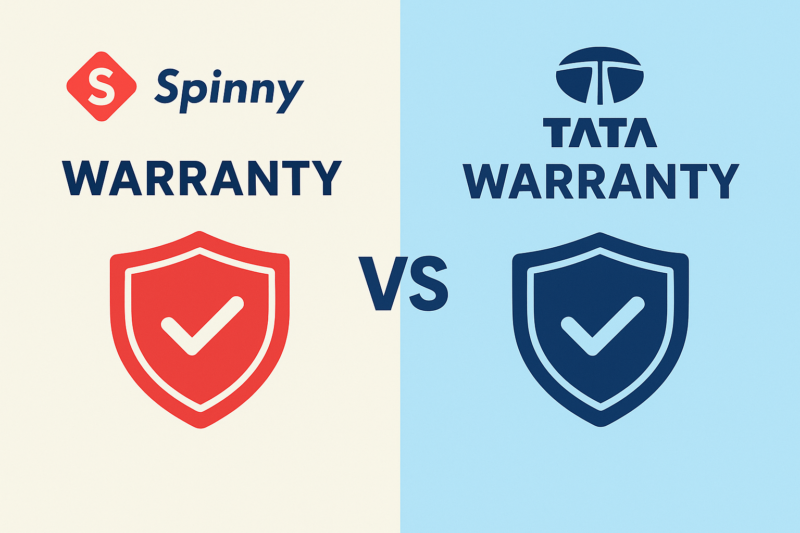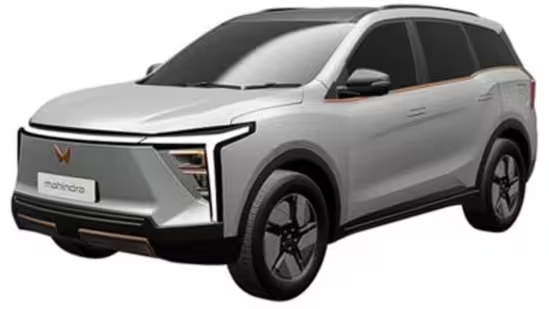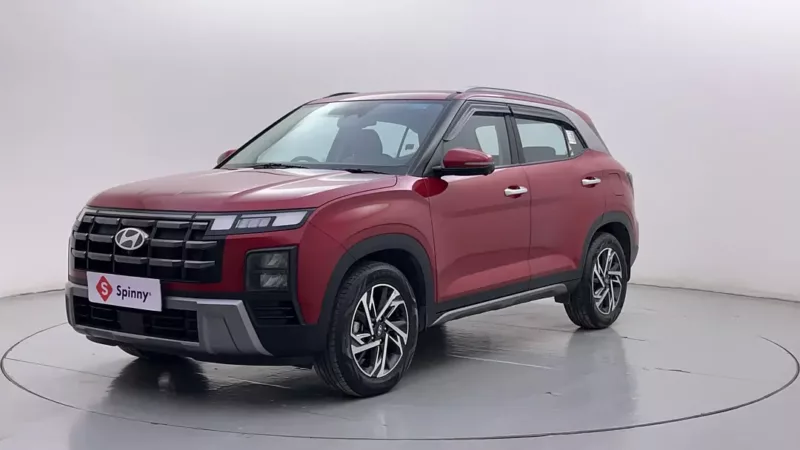As kids most of us remember using our bicycles to commute from home to school and back, and when the bicycle tyre got punctured there was a dedicated puncturewallah around the corner to fix the perforated tube. Mending a puncture was not a menial job and required a considerable amount of skill and time to be repaired. Same was for the automobiles back then as well, the only difference being the much larger tools used and an air machine to inflate the tyre. Things have come a long way since then and the very humble tyre has seen lots of evolutions in its structure and architecture. One influential evolution was the advent of tubeless tyres. Here is everything you need to know about tubeless tyres.
Also Read – Types Of Suspension
Why Choose Tubeless Tyres?
Tubeless tyres are simply tyres that unlike the conventional tube tyres don’t have a tube in them. These were introduced to the world by an American tyre company with the name BF Goodrich in the 1950s. However, it was only in the 1990s that the tubeless tyre was able to make its mark in India, and since then they have expanded their reach over the years.
Tubeless tyres are safer than the conventional tyres due to their puncture resistant features and their build quality makes them more durable.
Let us suppose that you are going for a solo drive through a long desolate stretch of the highway with absolutely nothing in sight except the tarmac. You run over a stray nail on the road. A tubed tyre would suffer an immediate puncture due to the nail piercing the inner tube. On a tubeless tyre, the nail becomes embedded in the tyre, causing a slow puncture. This allows you to continue driving to your next fuel stop and have the tyre repaired with a puncture repair kit, without changing to the spare wheel.
Tubeless tyres today are at par with their tubed counterparts in terms of price and are available for all purposes and in all designs, that make them a wonderful and a safe choice.
Also Read – Tyre Pressure In Car
Difference Between Tubeless Tyre and Tube Tyre
Tube tyres have long reigned the roads and still have an undeniable road presence in India as they have penetrated every nook and corner. Tubeless tyres on the other hand are a rage in cities but have less reach in rural areas.
Here are the differences between tube and tubeless tyres.
Parameters | Tube Tyre | Tubeless Tyres |
Durability | Less Durable | Highly Durable |
Safety | Unsafe | Safe |
Weight | Heavy. | Light |
Fuel Efficiency | Less | More |
Maintenance | High | Low |
Cost | Low | Low |
Durability The presence of a tube makes these tyres have less durability as tubes are highly prone to punctures. Friction between the tyre wall and tube can cause a puncture, tube pinching i.e., when the tube presses too hard against the rim, can also cause punctures. Tubeless tyres on the other hand are more durable than tube tyres as they do not possess a tube. An inner liner made out of synthetic rubber and the rim act as the air container.
Safety Since friction and tube pinching happen during the movement of the vehicle, there is a high probability of sudden air leak from the tyres, due to creation of multiple air outlets. This sudden leak leads to bursting of the tyre tube, which can lead to loss of control of the vehicle. In tubeless tyres, an inner liner and the tyre rim act as the air container, so, in the event of a puncture there are no extra outlets for air escape. This results in air seeping gradually from the puncture and giving the driver enough time and control to drive the vehicle to the nearest tyre repair shop.
Also Read – 4WD vs AWD
Weight Tube tyres have three components: a rim, a tyre and tube, which makes them heavier compared to tubeless tyres that have two components: a rim and a tyre. Lesser components make tubeless tyres lighter than tube tyres.
Fuel Efficiency Although efficiency is measured via the engine, tyres too have a say in them. Due to the extra weight tube tyres tend to be low on fuel efficiency compared to their tubeless counterparts. Tubeless tyres are more fuel efficient as they are lighter and dissipate heat better as the rim is in direct contact with the air inside.
Also Read – Drum Brakes vs Disc Brakes
Maintenance Since tubes are prone to punctures, it costs much to get the puncture repaired every now and then. This is the reason why tube tyres are high on maintenance. Plus there is the requirement of disassembling the tyre to repair the puncture. Tubeless tyres don’t have a tube, which is why the maintenance cost of these tyres is relatively low. There is no need to disassemble the tyre for fixing the puncture.
Cost Tube tyres cost less than tubeless tyres, but unfortunately they make up for it in their high maintenance costs. Tubeless tyres, although higher in cost are worth their value in the long run.
Advantages and Disadvantages of Tubeless Tyres
Like every other commodity, tubeless tyres also have their pros and cons. Have a look.
Advantages of Tubeless Tyres
No Random Punctures: The chances of a tubeless tyre getting punctured out of the blue are very low as there is no tube inside.
Ability to run at low air pressure: The lack of a tube makes it easier for a tubeless tyre to run even at low tyre pressure.
Liquid sealant: In some tubeless tyres there is a provision of a liquid sealant which seeps out through the puncture and dries out to seal the puncture, so that you can continue your drive.
Also Read – Types Of Car Paint
Light weight: Lack of tube makes tubeless tyres lighter than tube tyres, this also results in better fuel efficiency.
Stability: Since air is contained in the space between the tyre and the rim, the stability of the tyre at high speeds increases. This happens due to less working components i.e., the lack of a tube.
Disadvantages of Tubeless Tyres
Difficult to install: You cannot go to any mechanic and ask them to install the tubeless tyre, this requires specialised tools, machine and skill. Plus the tyre and seal have to be proper.
Not suited for extreme offroading: Now since offroading is taxing on tyres, tubeless tyres can’t take that much of a beating. It might result in the tyre coming off from extremely harsh climbs and descents.
Cannot be installed in wheels with spokes: The installation of a tubeless tyre requires an airtight rim for the tyre to contain air. Spoked wheels don’t have this facility and that is why tubeless tyre can’t be installed on them.
Sidewall puncture renders it useless: A pretty hard knock is required to get a hole in the sidewall of a tubeless tyre, however if a puncture is beyond repair then the tyre is useless, you can make use of it by using it with a tube, but then it won’t be a tubeless tyre.
Costly: The initial investment in a tubeless tyre might set many people aback due to the large cost. However, in the long run tubeless tyres cost less.
Also Read – RTO Full Form
How to maintain Tubeless Tyres?
It doesn’t take much to maintain tubeless tyres, a few tips mentioned below can help increase the life of your tyre.
Timely Air Pressure Check: Always maintain the proper pressure in the tyre, over filling or under filling are detrimental to a tyre’s health. Keep the proper pressure always.
Avoid Overspeeding: Always run the car in the optimum speed, over speeding will result in more wear of the tyre and consequently less life.
Check The Treads: Gravel, small stones, glass, metal etc can get embedded in the grooves of the tyres, keep a check on the tread and pry them out to ensure that your tyre has a good grip in all seasons.
Wheel alignment and balancing: Proper alignment and wheel balance is necessary for even wear of all the tyres, any thing off will result in uneven wear which can result in performance and ride quality of the vehicle. Balancing and alignment should be done every 10,000 kms.
Tyre Rotation: Tyre rotation means interchanging them with each other to ensure equal wear and thus extension of their service life. Tyre rotation depends on the ‘drive’ of the vehicle, i.e. front-wheel drive, rear-wheel drive or four-wheel drive.
Also Read – Engine Service
FAQ
Q. What is the main difference between tube and tubeless Tyre?
The ma͏in difference ͏is͏ that t͏ube ty͏res ͏use an inn͏e͏r tube to hol͏d ͏ai͏r͏, while tubeless t͏yr͏es rely on an͏ a͏ir͏tight seal b͏etwee͏n͏ the tyre and rim, making them safer, more durable, and fuel-effic͏ient͏.
Q. Do tubeless tyres get punctured easily?
While tubele͏ss ty͏r͏e͏s͏ can get punctured, they are more resistant than͏ tube tyres͏. The ͏punct͏ure usually causes a slow air leak, giving you time to reach a service station wit͏hout immediate ty͏re failure͏.͏
Q. Do tubeless ty͏re ne͏ed air to functi͏on?
Yes, tubeless ͏tyr͏es requi͏re air just l͏i͏ke traditional tyres͏. ͏The difference is that ai͏r is ͏sealed ͏b͏etwe͏en the tyre and ri͏m,͏ ͏allowing for more stabilit͏y an͏d better per͏forma͏nce, ͏eve͏n͏ at lower air pressure ͏leve͏ls.͏
Q. How many punctur͏es ͏can a tubeless tyre take before ͏re͏placement?
A tubeless t͏yre can handle multiple minor pun͏cture͏s, but i͏f ͏t͏he sidewall or rim is sev͏erely d͏amag͏ed, it ͏may n͏ee͏d to be͏ replaced. Proper m͏aintenance can extend it͏s͏ lifespan de͏spit͏e a few puncture͏s.
Q. What happens during a͏ tubeles͏s tyre pu͏ncture?
Wh͏e͏n a tube͏less tyre͏ is punctured, t͏he air e͏scapes slowly, u͏nlike tu͏be ͏tyres where the͏ air esc͏apes immediately. This͏ gives you tim͏e to dr͏iv͏e to a repair s͏ho͏p or fix the punctu͏re with a repair͏ k͏it.
Important Links
7 Seater Cars | Best Mileage Cars | Used Cars In Bangalore | Used Cars In Delhi | Hybrid Cars in India | Sunroof Cars | Used Cars In Gurgaon | Used Cars In Hyderabad | Used Cars In Noida | Used Cars In Pune | CNG Cars in India | Jeeps in India | Used Cars In Mumbai | Used Cars In Ahmedabad | Types of Cars | Car Brands in India | Used Cars In Chennai | Used Cars In Kolkata | Used Cars in Lucknow | Automatic Cars in India | Luxury Cars in India | Used Cars in Chandigarh | Used Cars in Coimbatore | Used Cars in Indore | Used Cars in Jaipur




